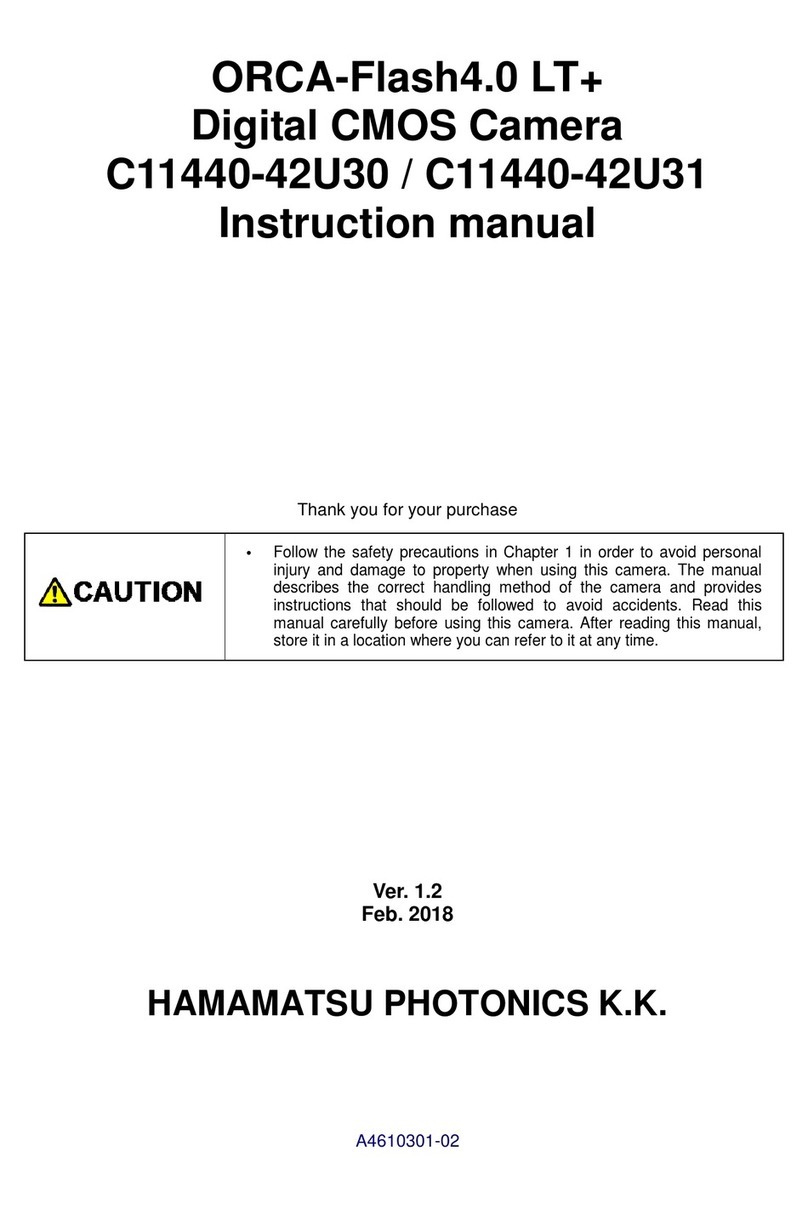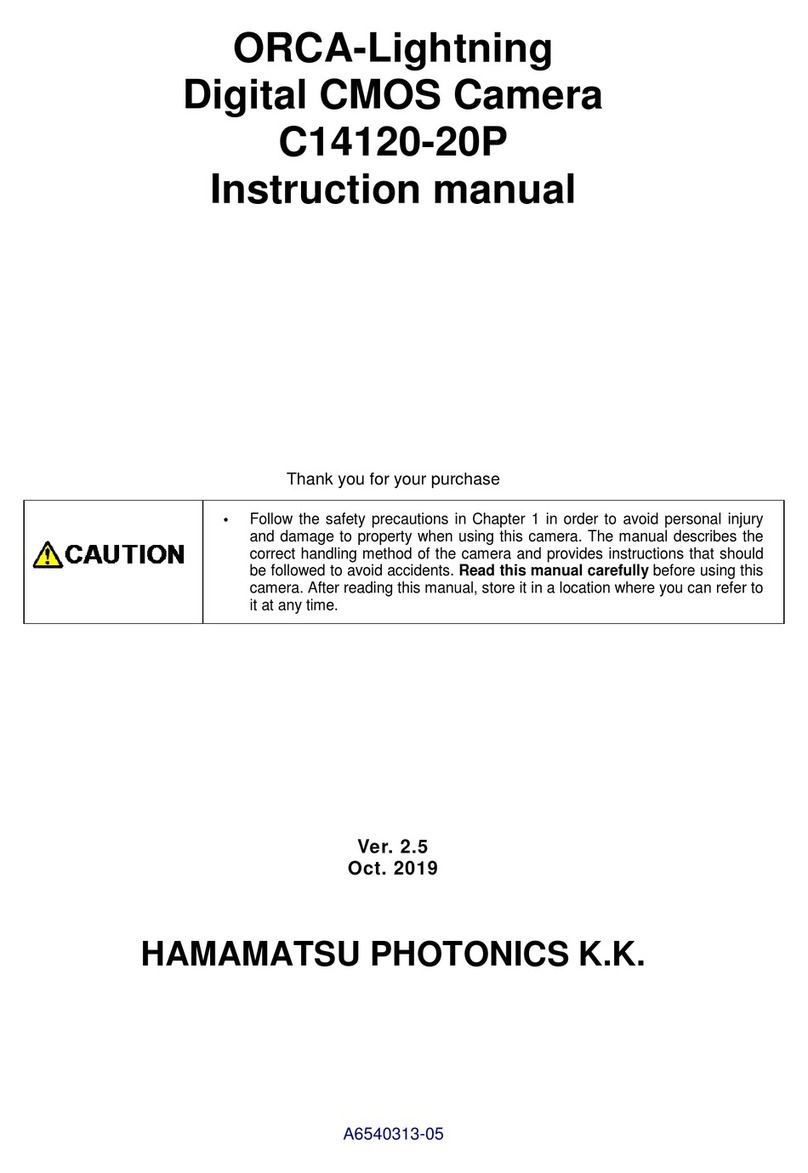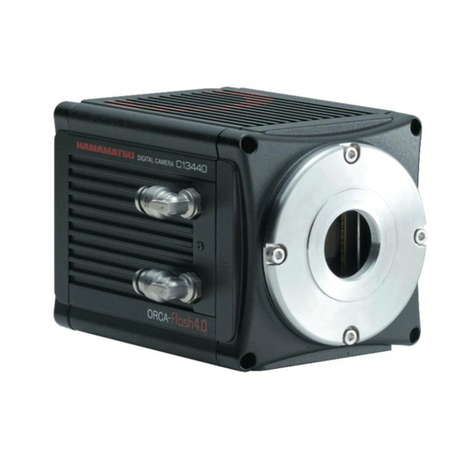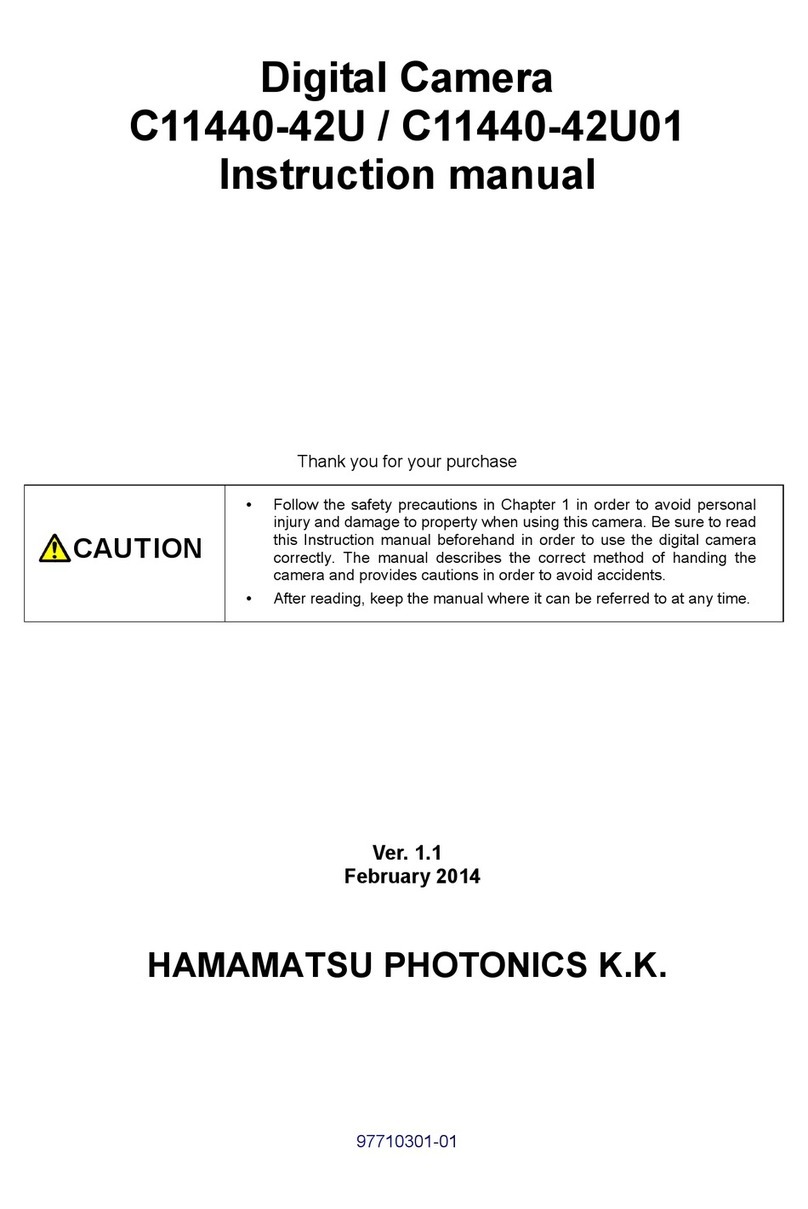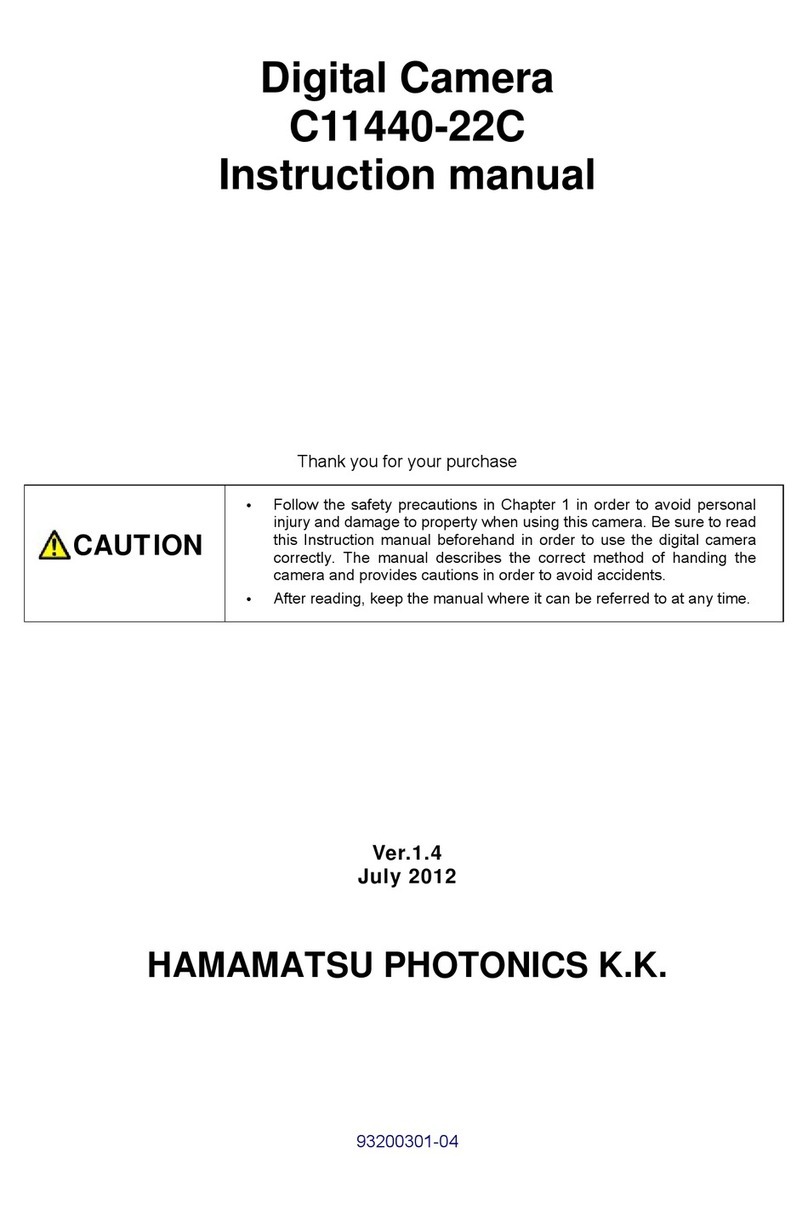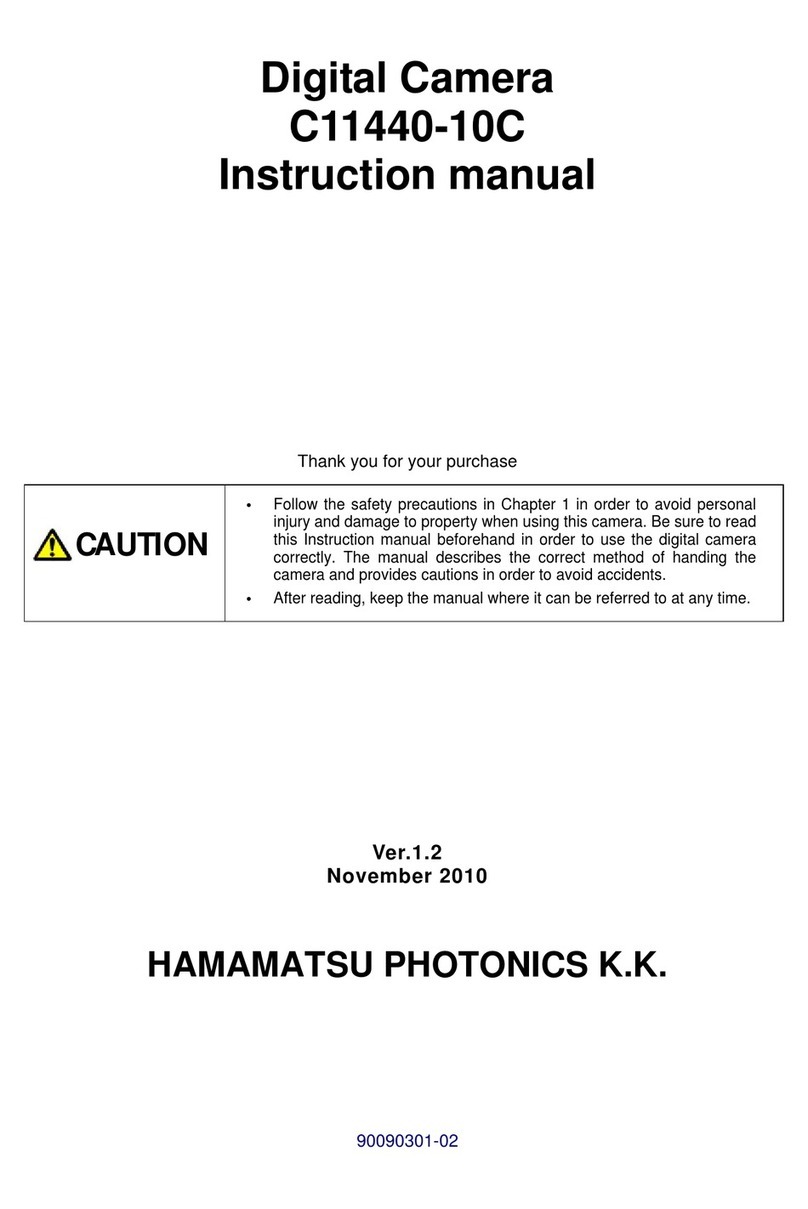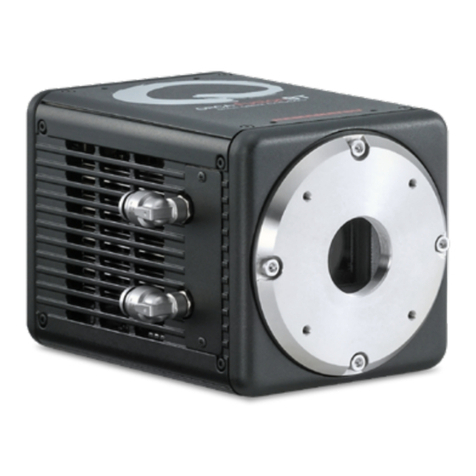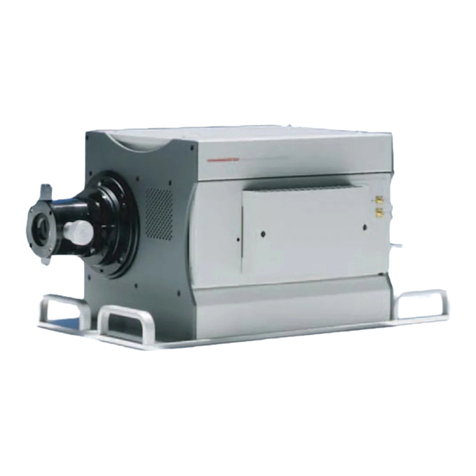
C11440-36U Instruction Manual Ver.1.1
6
Contents
1. SAFETY PRECAUTIONS............................................................................ 1
INDICATION OF THE SYMBOLS .........................................................................11-1
CLASSIFICATION OF WARNING ........................................................................11-2
2. CHECK THE CONTENTS OF PACKAGE................................................... 4
3. INSTALLATION........................................................................................... 5
4. OVERVIEW.................................................................................................. 8
5. FEATURES.................................................................................................. 8
6. NAME AND FUNCTION OF THE PARTS ................................................. 10
7. CONNECTING CABLE.............................................................................. 12
CONNECTING CABLE........................................................................................127-1
8. OPERATION.............................................................................................. 13
PREPARATION FOR IMAGING..........................................................................138-1
END OF IMAGING ...............................................................................................138-2
9. DESCRIPTION OF VARIOUS FUNCTIONS ............................................. 14
THEORY OF CMOS IMAGE SENSOR ...............................................................149-1
READOUT METHOD...........................................................................................159-2
FREE RUNNING MODE ......................................................................................169-3
9-3-1 Normal readout mode................................................................................16
9-3-2 Electrical shutter mode ..............................................................................16
EXTERNAL TRIGGER MODE.............................................................................179-4
9-4-1 Edge trigger mode .....................................................................................17
9-4-2 Level trigger mode.....................................................................................18
9-4-3 Synchronous readout trigger mode ............................................................18
9-4-4 Start trigger mode......................................................................................20
9-4-5 Trigger delay function ................................................................................20
SOFTWARE TRIGGER MODE ...........................................................................209-5
CONFIGURING EXPOSURE TIME.....................................................................219-6
FRAME RATE CALCULATION...........................................................................219-7
TRIGGER OUTPUT .............................................................................................229-8
9-8-1 Global exposure timing output ...................................................................22
9-8-2 Programmable timing output ......................................................................22
9-8-3 Trigger ready output ..................................................................................23
ANALOG GAIN FUNCTION ................................................................................239-9
REAL-TIME CORRECTION FUNCTIONS ..........................................................239-10
10. PRECAUTION USING CMOS IMAGE SENSOR....................................... 24
11. MAINTENANCE......................................................................................... 25
CARE ...................................................................................................................2511-1
12. TROUBLESHOOTING CHECKLIST ......................................................... 26
IMAGE IS NOT TRANSFERRED ........................................................................2612-1
ALTHOUGH IMAGES ARE TRANSFFERED.....................................................2612-2
13. SPECIFICATIONS ..................................................................................... 27
